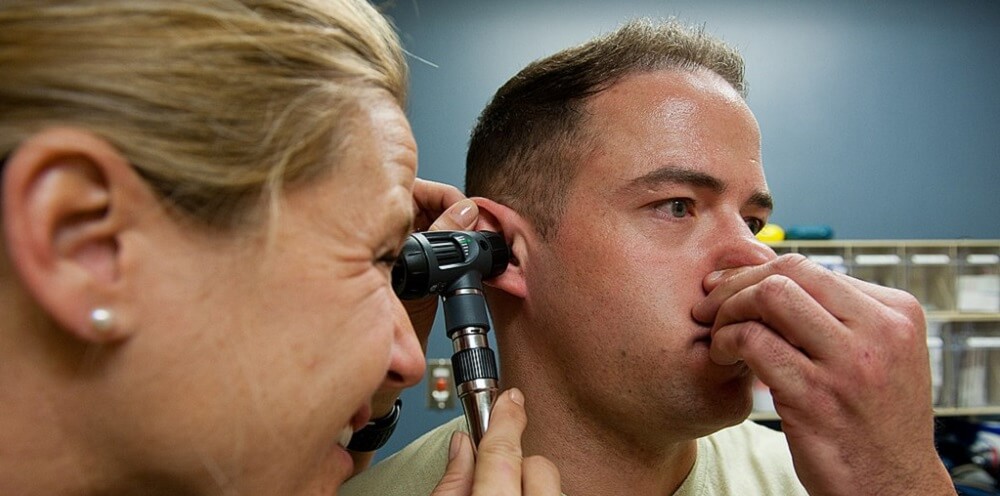Definition
The Valsalva maneuver (VM) changes the pressure within the chest and abdomen and causes the body to try to compensate for the increased pressure by slowing the heart. This is done by breathing hard against a closed airway for fifteen seconds, blocking expiratory air from leaving the body via the mouth and nose. The Valsalva maneuver is used to diagnose heart conditions or problems with the autonomic nervous system. It can also make a too-rapid heartbeat slow down.
What is the Valsalva Maneuver?
The Valsalva maneuver is the combination of breathing in, tightly closing the mouth and pinching the nose, and forcefully breathing out against a blocked airway for fifteen seconds. The glottis closes as you bear down – such as when straining during a bowel movement.
Because air is blocked inside the body, differences in internal pressures occur that affect the heart. The maneuver activates the autonomic system in response to a temporary rise in blood pressure. In response, the body slows the heart rate and stops the heart from contracting as strongly.

How Does the Valsalva Maneuver Work?
Understanding the circulatory system is important when you need to know what the Valsalva maneuver is used for and how it works. Cardiac activity – the actions of the heart – is measured using a range of parameters.
- Systole: heart muscle contraction that pushes blood into the arteries
- Diastole: heart muscle relaxation that pulls blood into the heart
- Heart rate: how many times the heart beats per minute
- Stroke volume: how much blood is pumped from the left ventricle into the aorta at each beat
- Cardiac output: the amount of blood pumped into the aorta every minute. Cardiac output is calculated by multiplying the heart rate by the stroke volume.
- Preload: how stretched the heart muscle cells (cardiomyocytes) are before the chambers of the heart contract. Also called the left ventricular end-diastolic pressure (LVEDP).
- Afterload: how much resistance the heart must work against to open the valve in front of the aorta and push blood into it. If the aorta is stiff, the heart must work harder – the afterload will be higher.
- Venous return: the flow of blood from the veins into the right atrium. This should be very similar to cardiac output. In other words, the amount of blood that flows into the heart should equal the amount pumped out.
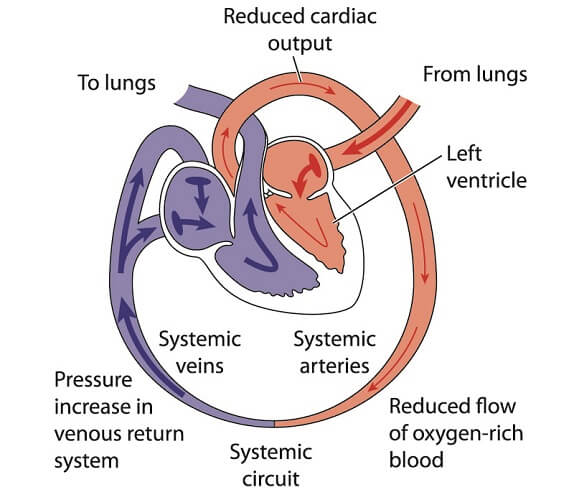
Another topic related to the Valsalva maneuver is the autonomic nervous system – the part of our nervous system that is controlled by the brain and not by our intentions. The autonomic nervous system has sympathetic and parasympathetic actions – fight/flight and relax and digest reactions respectively.
The parasympathetic system, in this case, works primarily via the vagus nerve (CN X). This important nerve responds to pressure sensors in major blood vessels such as the aorta. The vagus nerve slows the heart rate and relaxes the arteries, widening them and normalizing the blood pressure.
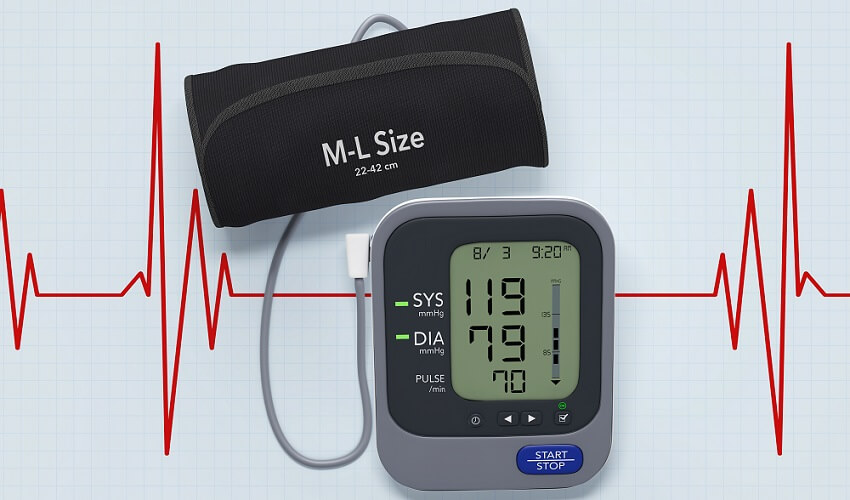
Valsalva Maneuver Phases
There are four Valsalva maneuver phases:
Phase One: Straining to breathe against a closed airway increases pressure in the thoracic cavity. This extra pressure compresses the major blood vessels and causes the stroke volume – and so the systolic and diastolic blood pressure – to rise. Blood is pushed into the left atrium from the pulmonary veins.

Phase Two: The longer-term (fifteen seconds) high pressure in the thoracic cavity stops sufficient levels of deoxygenated blood from returning to the heart. Deoxygenated blood usually pours into the right atrium from the vena cava superior and vena cava inferior. Because the veins in the thoracic cavity remain compressed, they supply less blood to the right atrium. This reduces the cardiac output and stroke volume and subsequently lowers the blood pressure.
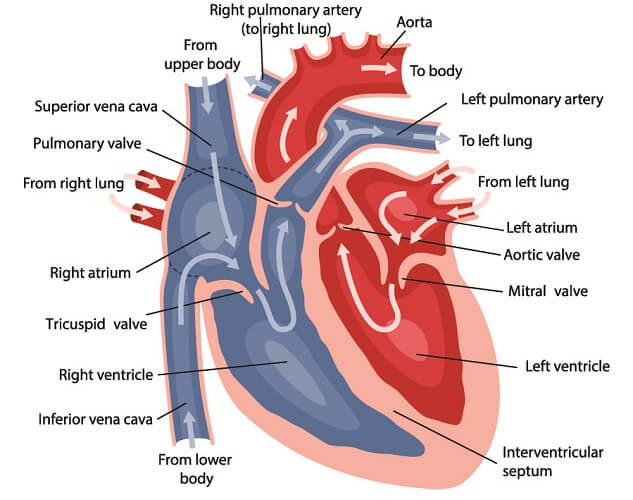
In response to this fifteen-second increase in intrathoracic pressure and reduced cardiac outpuut, the autonomic nervous system tries to compensate. The blood vessels constrict and the heart rate increases. However, there is insufficient blood flow into the heart due to the compressed veins.
Phase Three: When the breath is finally released, intrathoracic pressure quickly falls. Blood can once again enter the heart efficiently and the cardiac output begins to normalize.
Phase Four: During phases one and two, less blood enters the heart. This means that during phase four, more blood pours into the heart. For a short time, stroke volume and cardiac output become higher than normal.
As the low blood pressure of phases one and two returns to normal there is no longer need for the heart to pump faster. The heart rate returns to normal.
What is the Valsalva Maneuver Used For?
The Valsalva maneuver is used for diagnostic and treatment purposes. It can also be used to release pressure in the middle ear during flying when swallowing does not help. However, when unblocking the ears any Valsalva maneuver techniques are not advised unless you know you have a healthy heart and are sitting down.

Never try the Valsalva maneuver unless you have been advised to by a doctor or have regular health checks. The sudden drop in heart rate and blood pressure can cause fainting in people with naturally low blood pressure and overwork the heart. If an undiagnosed heart condition is present, the Valsalva maneuver could be dangerous.
Straining when having a bowel movement has the same effect as the Valsalva maneuver and constipation is linked to heart-related deaths in people with heart disease. The famous 1950s and 1960s singer Elvis Presley was thought to have died in this way when his body was found in the bathroom; it was later concluded that his death was the result of codeine abuse. Codeine, however, is very much associated with constipation and the bowel movement theory may not be so wrong.

Valsalva Maneuver Uses in Cardiology
Cardiologists use the Valsalva maneuver to test heart function. The four phases described above apply to people with a healthy heart function. When the heart is damaged, certain changes in these phases can occur.
Abnormal arterial pressure results are seen in people with mild to severe heart valve (mitral valve and/or aortic valve) and ventricular failure. When cardiologists listen to the heart during the maneuver they can detect heart murmurs.
Some people suffer from short-term racing heartbeats. This is called SVT or supraventricular tachycardia. Valsalva maneuver SVT therapy can bring the heart rate back to normal in up to 50% of sufferers.

SVT is usually associated with heart rates of over one hundred beats per minute. Symptoms are uncomfortable and worrying for the affected person and cause anxiety, palpitations, and shortness of breath. If SVT continues for long periods the body does not receive enough oxygen because the cardiac output is too low – the heart is not given time to fill between beats.
A percentage of patients with supraventricular tachycardia are taught how to use the Valsalva maneuver to bring their heart rate down. Although initially the heart beats faster, phase four triggering of the vagus nerve lowers the heart rate. It is important that no heart conditions are present that could make this therapy dangerous.
Other Medical Valsalva Maneuver Uses
Pulmonologists use the Valsalva maneuver to look at lung function. Pulmonary hypertension, emphysema, and chronic pulmonary disease can make the pulse completely disappear during the breath-holding phase.

Another use of the Valsalva maneuver is to aid diagnosis in spinal injuries. Increased intrathoracic pressure compresses the spinal nerves in this part of the body. Neurologists and orthopedic surgeons can then see if the fifteen seconds of pressure cause symptoms.
The maneuver can also be used to diagnose soft tissue weakness and disease. Urologists use it to check for testicular hypertrophy; inguinal and umbilical hernias may also become visible when intrathoracic and abdominal pressure increases.
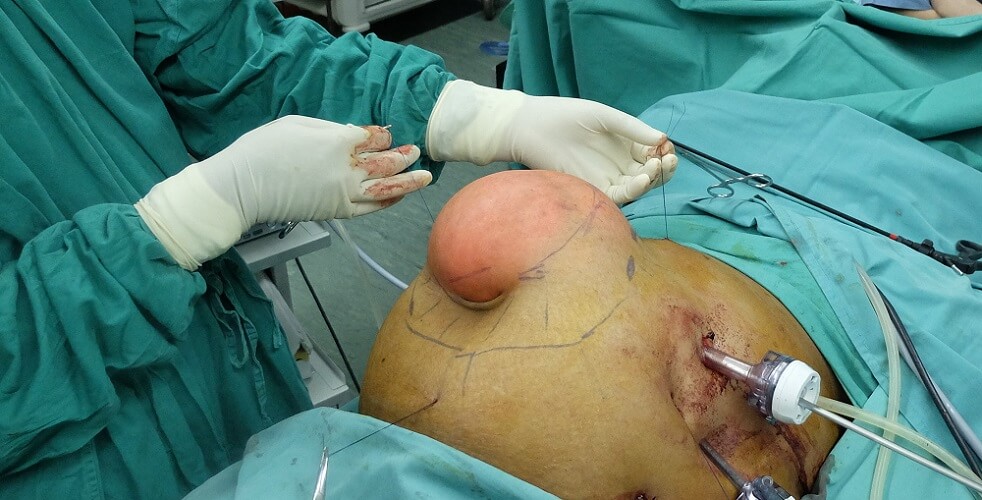
Valsalva Maneuver in Sports
In sports, Valsalva maneuvers are used to stabilize the muscles around the pelvis. They are said to improve stability when doing squats, dead-lifts, bench presses, and push presses. Some people also use it to aid balance during yoga poses. However, the effects can be dangerous if an undiagnosed heart condition is present.

Sports enthusiasts can find many YouTube Valsalva maneuver how-to videos. It is not advised to mimic them unless you have been given the all-clear by a medical professional. For this weightlifter, Valsalva maneuver pressures during a lifting session caused his aorta to tear. Doctors found pre-existing but undiagnosed heart conditions; the man died shortly after emergency surgery.

